Disir: Elusive Female Guardian Spirits Of Fate And Harbingers Of Death And War
A. Sutherland - AncientPages.com - Some believe the Disir in Norse mythology were malicious, harmful spirits, demons of death, destruction, and war who sought terrible things for the people they watched.
"The Dises" (1909) by Dorothy Hardy. Guerber, H. A. (Hélène Adeline) (1909). Myths of the Norsemen from the Eddas and Sagas. London: Harrap. This illustration facing page 170. Digitized by the Internet Archive and available from
https://archive.org/details/mythsofthenorsem00gueruoft . Image uploader: Haukurth. - CC BY-SA 4.0
Others suggest that the Norse people also believed in the positive influence of the Disir (Dises) in a person's life. These goddesses (spirits) make a separate female group in Scandinavian mythology. They are related to fertility and death.
The 'Disir '(singular, 'Dis') watched over one single individual, families, and even entire neighborhoods. They brought good to a home and its family. They were often associated with mother goddesses, who were powerful and highly respected mythological figures in different cultures and religions around the world.
The ancient people of Scandinavia also knew that these female guardian spirits were associated with death and needed to be respected. Therefore, they honored the Disir in private and public ceremonies known as disablot, the festival of Dis, where sacrifices were made to them.
According to ancient Norse beliefs, they arrived when children were born, and in this role, they function like Roman fairies. The Disir were also regarded as local land spirits that governed fertility. This role was also prevalent among ancient people in Scandinavia.
The famous and beautiful Norse goddess Freya was called Vanadis; it means she was an inhabitant of Vanaheim and the "Dis of the Vanir." Another goddess associated with Disir was the giantess Skadi (öndurdís) - the "Dise of the Skis."
"Idise" (1905) by Emil Doepler - "Idisen" impede an army while binding warriors and freeing others as described in the "Liberation of Prisoners" Merseburg Incantation. Walhall, die Götterwelt der Germanen. Martin Oldenbourg, Berlin. Page 13. Public Domain
The Disir are also mentioned in the twelfth-century Skaldic poem, Krákumál, also known as the "Lay of Kraka" and composed in the 12th century, most probably in the Scottish islands. The poem tells about the heroic deeds of a brave warrior and the hope that a violent and powerful revenge will follow his death. Such a warrior must soon experience the pleasures of Valhalla, according to the poem, which also contains a monologue in which Ragnar Lodbrok is dying.
As recounted in the Icelandic sagas, the dying Viking hero, Lodbrok, was captured by Aelle, King of Northumbria, who ordered him executed by throwing him into a pit filled with poisonous snakes.
In the mythology and beliefs of the pre-Christian Norse people, the Disir - undoubtedly enigmatic spiritual beings - are often identified with divine collectives as the Norns and the Valkyries. At one time, they are described as beings with typical warrior characteristics or, at another time, show their beneficial and protective relation to people.
From the Krákumál poem, we learn that the dying Ragnar says that Odin sent the Disir to invite him to Valhalla.
"We now wish to end,
home I invite the dísir*,
which Odin sendt me.
Glad shall I drink ale with the æsir
in excellence I will drink.."
On the other hand, there is another source, known as "Thidranda thattr", a short Icelandic saga dated to 13th-century, and set in Eastern Iceland in 996, only four years before Christianity was adopted by the Icelandic Althing (an equivalent of the Swedish - Thing).
According to the saga, Tirdrandi, sought to adopt Christianity in Iceland. Unfortunately, he ignored the warnings of Thorhall Seer or the Prophet and set off on a winter night (held 28 days after the Autumn equinox), and he is killed by a mysterious equestrian group of nine black-clad women with drawn swords. At the same time, nine white-clad women riding on white horses from the south attempt to defend Tirdrandi. In vain, Tirdrandi was killed by those in black.
The saga may be a symbolic story about the struggle between heathenry and Christianity in Iceland and describes the religious change in this country, which is quickly approaching.
Written by – A. Sutherland - AncientPages.com Senior Staff Writer
Copyright © AncientPages.com All rights reserved. This material may not be published, broadcast, rewritten or redistributed in whole or part without the written permission of AncientPages.com
Expand for referencesReferences:
Lecouteux, C. Encyclopedia of Norse and Germanic Folklore, Mythology, and Magic
Simek, R. Dictionary of Northern Mythology
Sass Robert, Heathenry: The Old Ways for Today
More From Ancient Pages
-
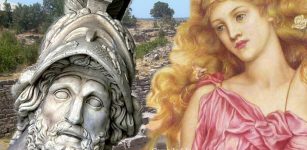 King Menelaus Of Sparta: Husband Of Helen Of Troy And Key Figure In The Trojan War
Featured Stories | May 27, 2020
King Menelaus Of Sparta: Husband Of Helen Of Troy And Key Figure In The Trojan War
Featured Stories | May 27, 2020 -
 Cheng I Sao: Dangerous Female Pirate Whose Strict Code Of Laws Kept Pirates Subordinated And Successful
Featured Stories | Mar 11, 2019
Cheng I Sao: Dangerous Female Pirate Whose Strict Code Of Laws Kept Pirates Subordinated And Successful
Featured Stories | Mar 11, 2019 -
 Unknown Neanderthal Lineage Discovered In “Thorin” Who Lived 50,000 Years Ago
DNA | Sep 11, 2024
Unknown Neanderthal Lineage Discovered In “Thorin” Who Lived 50,000 Years Ago
DNA | Sep 11, 2024 -
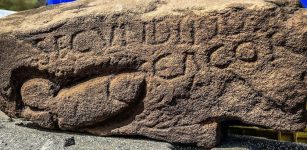 Ancient Graffiti Unearthed At Roman Vindolanda Reveals What One Roman Thought Of Another
Archaeology | May 27, 2022
Ancient Graffiti Unearthed At Roman Vindolanda Reveals What One Roman Thought Of Another
Archaeology | May 27, 2022 -
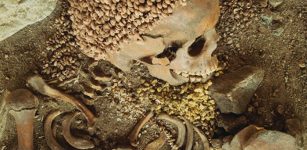 Broken Pebbles In Arene Candide Cave Shed New Light On Ancient Burial Practices
Archaeology | Mar 7, 2017
Broken Pebbles In Arene Candide Cave Shed New Light On Ancient Burial Practices
Archaeology | Mar 7, 2017 -
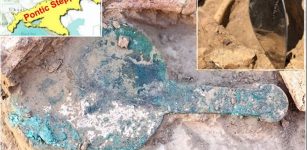 Scythians Were Not Always Nomadic Warriors Of The Pontic Steppe In Black Sea Region
Archaeology | Mar 19, 2021
Scythians Were Not Always Nomadic Warriors Of The Pontic Steppe In Black Sea Region
Archaeology | Mar 19, 2021 -
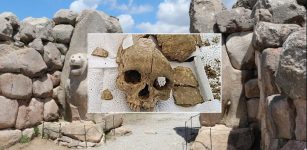 3,500-Year-Old Skull And Thighbone Discovered In Sapinuwa Antique City Of Central Anatolia
Archaeology | Dec 3, 2019
3,500-Year-Old Skull And Thighbone Discovered In Sapinuwa Antique City Of Central Anatolia
Archaeology | Dec 3, 2019 -
 Roman glass-making furnaces discovered in Egypt’s Delta
Civilizations | Aug 25, 2015
Roman glass-making furnaces discovered in Egypt’s Delta
Civilizations | Aug 25, 2015 -
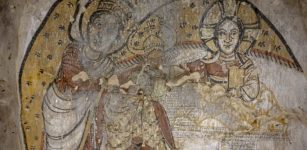 New, Unique Wall Paintings Discovered In Old Dongola, Sudan
Archaeology | Apr 10, 2023
New, Unique Wall Paintings Discovered In Old Dongola, Sudan
Archaeology | Apr 10, 2023 -
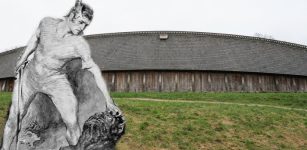 Lejre Viking Hall And Beowulf – What Is The Connection?
Featured Stories | Jun 3, 2024
Lejre Viking Hall And Beowulf – What Is The Connection?
Featured Stories | Jun 3, 2024 -
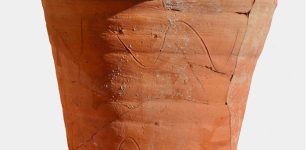 Ancient Roman Portable Toilets Studied By Scientists
Archaeology | Feb 11, 2022
Ancient Roman Portable Toilets Studied By Scientists
Archaeology | Feb 11, 2022 -
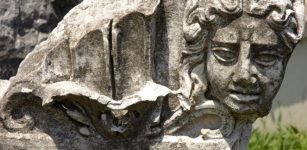 Ancient City Of Prusias ad Hypium And Ruins Of City’s Theater Known As ’40 Steps’
Archaeology | Mar 13, 2020
Ancient City Of Prusias ad Hypium And Ruins Of City’s Theater Known As ’40 Steps’
Archaeology | Mar 13, 2020 -
 Frightening Edinburgh Vaults: The Spooky Underground City Of The Dead
Featured Stories | Jun 4, 2016
Frightening Edinburgh Vaults: The Spooky Underground City Of The Dead
Featured Stories | Jun 4, 2016 -
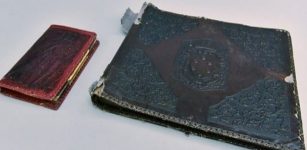 Nazi Photo Album Made Of Human Skin Found At Polish Antiques Market
History | Mar 18, 2020
Nazi Photo Album Made Of Human Skin Found At Polish Antiques Market
History | Mar 18, 2020 -
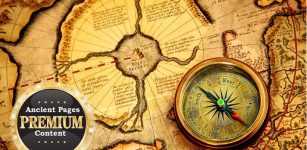 The Perplexing Story Of The Seven Continents And The Seven Mysterious Races – Distant Past – Part 1
Featured Stories | May 9, 2022
The Perplexing Story Of The Seven Continents And The Seven Mysterious Races – Distant Past – Part 1
Featured Stories | May 9, 2022 -
 Ancient Medical Machine Ahead Of Its Time Hidden In Emperor’s Temple – Secret Science Knowledge Examined
Featured Stories | Apr 20, 2018
Ancient Medical Machine Ahead Of Its Time Hidden In Emperor’s Temple – Secret Science Knowledge Examined
Featured Stories | Apr 20, 2018 -
 Excavations Reveal New Artifacts That Change History Of Ancient City Of Pergamon
Archaeology | Jul 4, 2020
Excavations Reveal New Artifacts That Change History Of Ancient City Of Pergamon
Archaeology | Jul 4, 2020 -
 Who Built Massive Astronomically Oriented Buildings In The Most Ancient Times?
Civilizations | Nov 27, 2018
Who Built Massive Astronomically Oriented Buildings In The Most Ancient Times?
Civilizations | Nov 27, 2018 -
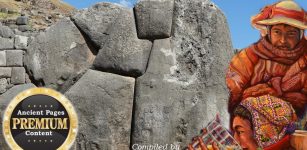 The Untold Story Of The Inca – Mysterious Place Of The Raised Stones – Part 2
Civilizations | Jul 5, 2019
The Untold Story Of The Inca – Mysterious Place Of The Raised Stones – Part 2
Civilizations | Jul 5, 2019 -
 Gate of Zeus Temple Is A New Discovery In Western Turkey
Archaeology | Sep 30, 2021
Gate of Zeus Temple Is A New Discovery In Western Turkey
Archaeology | Sep 30, 2021


